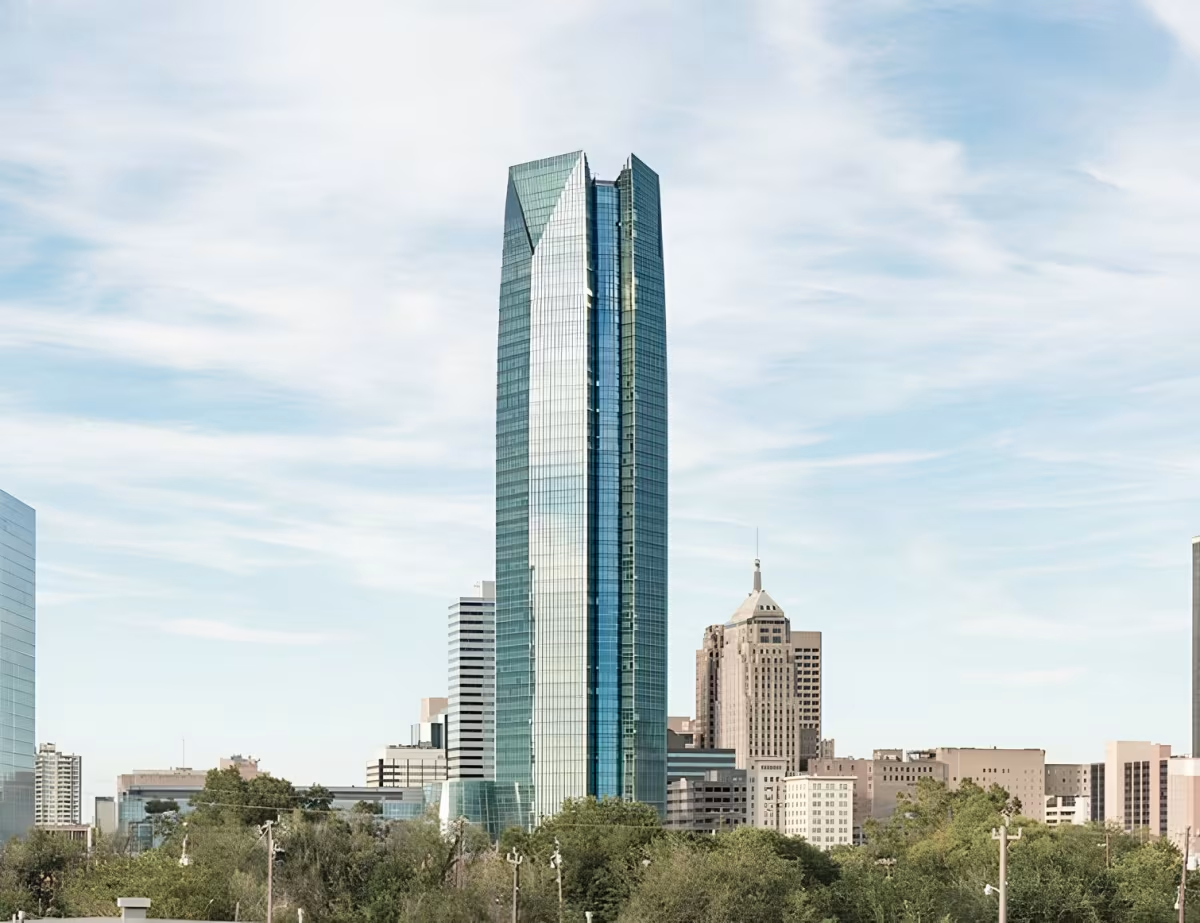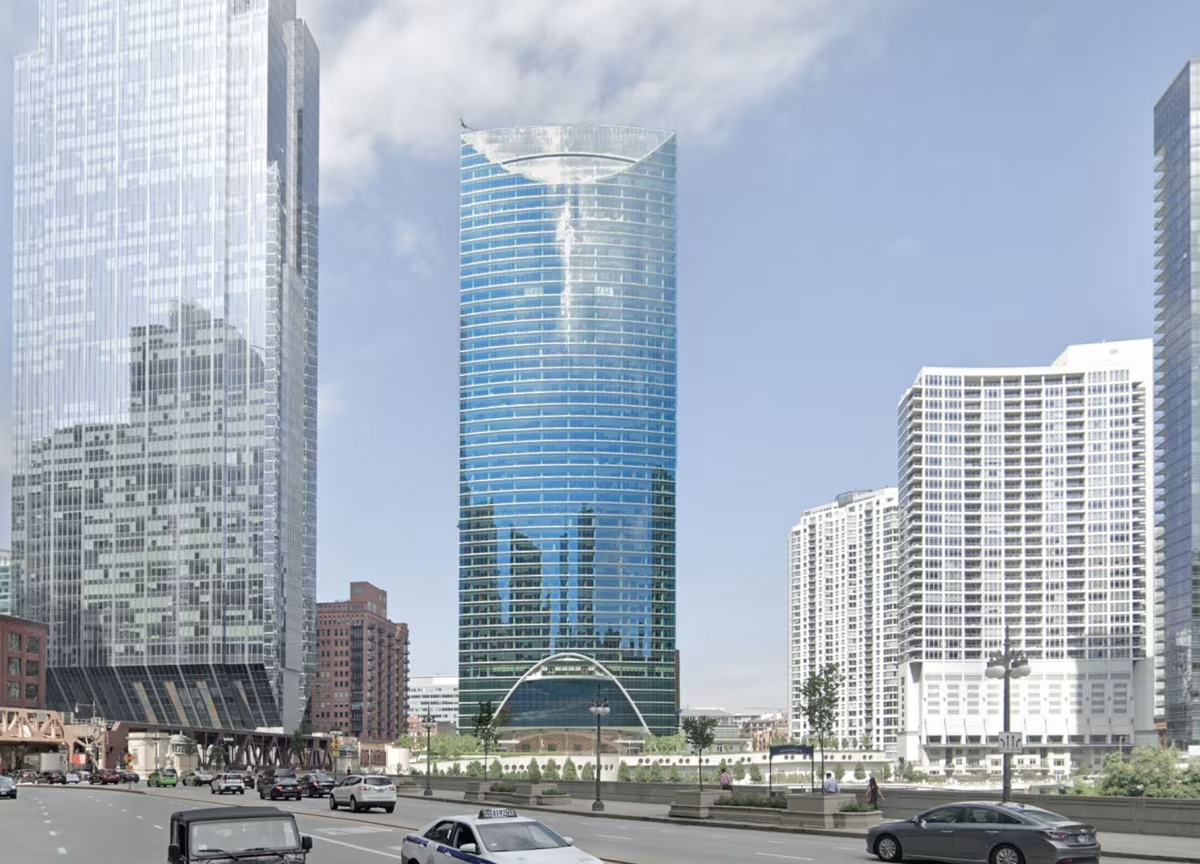Devon Energy Center vs River Point Tower


Comparing the Devon Energy Center and the River Point Tower is an interesting exercise, because even though they are located in different cities (Oklahoma City, OK and Chicago, IL), both were designed by Pickard Chilton and finished within within 5 years of each other. This gives us the chance to see how the same architect's ideas were expressed in different urban contexts almost simultaneously.
Height & Size
These two towers present an interesting contrast in their proportions. The Devon Energy Center rises higher at 850ft (259m), while the River Point Tower reaches 732ft (223m). However, the River Point Tower accommodates more floors with 52 levels above ground, compared to 50 floors in the Devon Energy Center.
This suggests different approaches to interior space design. The Devon Energy Center has an average floor-to-floor height of approximately 5.2m, while the River Point Tower has more compact floors averaging around 4.3m each. The taller building's more generous floor heights might indicate grander interior spaces, higher ceilings, or different programmatic requirements.
These different proportions likely reflect the specific needs each building was designed to serve, whether driven by zoning regulations, client requirements, or the intended use of the spaces within. The contrast shows how architects can achieve different spatial experiences even when working with similar overall building scales.
Architectural Style
Both the Devon Energy Center and the River Point Tower were designed in line with the aesthetic conventions of the Contemporary style.
At the time, this style was at the height of its popularity. So Pickard Chilton followed what was in many ways expected at the time, producing designs that fit comfortably within contemporary architectural norms rather, than breaking with convention.
Uses
Both the Devon Energy Center and the River Point Tower were designed to serve as commercial towers, and that has remained their main use since their completion, serving similar roles in the urban fabric.
Both towers provide significant parking capacity, with Devon Energy Center offering 2898 spaces and the River Point Tower offering 160.
Structure & Facade
The two towers rely on different structural systems, reflecting distinct engineering strategies.
The Devon Energy Center uses a Frame structural system, which relies on a regular grid of columns and beams to sustain its weight, while the River Point Tower uses a Framed Tube In Tube system, that combines a strong central core with a perimeter tube of columns.
Yet, when it comes to their facade, they both employed the same solution, a Curtain Wall facade.
A curtain wall is a non-load-bearing facade hung from the structural frame. It is anchored to floor slabs and transfers only its own weight and wind loads, allowing for sleek, glassy exteriors.
| Devon Energy Center | River Point Tower | |
|---|---|---|
| Pickard Chilton | Architect | Pickard Chilton |
| 2009 | Construction Started | 2013 |
| 2012 | Year Completed | 2017 |
| Contemporary | Architectural Style | Contemporary |
| Commercial | Current Use | Commercial |
| 50 | Floors Above Ground | 52 |
| 2 | Floors Below Ground | 1 |
| 227 | Last Floor Height | 201 |
| 259 m | Height (m) | 223 m |
| 279200 | Built-up Area (m²) | 167225 |
| Frame | Structure Type | Framed Tube In Tube |
| Concrete | Vertical Structure Material | Steel |
| Reinforced Concrete | Horizontal Structure Material | Poured Concrete Over Metal Decking |
| No | Facade Structural? | No |
| Glass, Steel | Main Facade Material | Glass |
| Holder Construction | Main Contractor | Lend Lease |
| Hines | Developer | Hines |
| OJB Landscape Architecture | Landscape Architect | OJB Landscape Architecture |
| Cosentini Associates | MEP Engineer | Alvine Engineering |
| Thornton Tomasetti | Structural Engineer | Magnusson Klemencic Associates |
| OK | State | IL |
| Oklahoma City | City | Chicago |
| 333 W Sheridan Ave | Address | 444 West Lake Street |